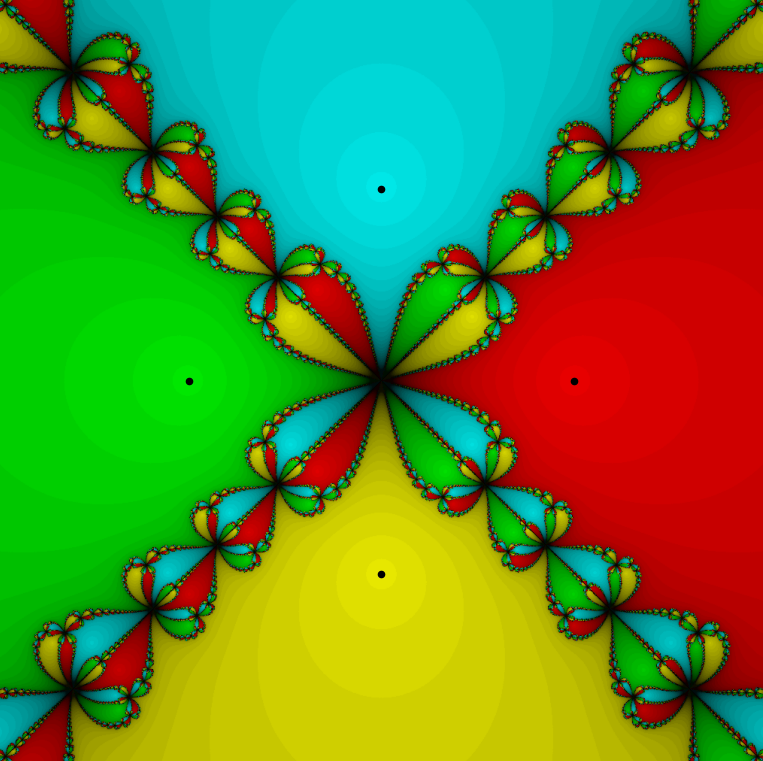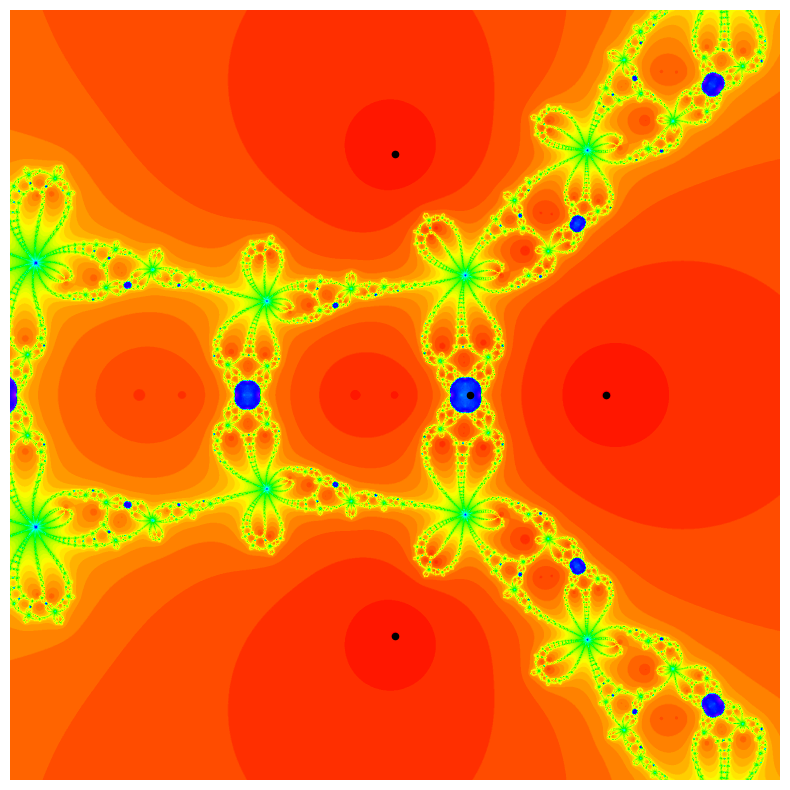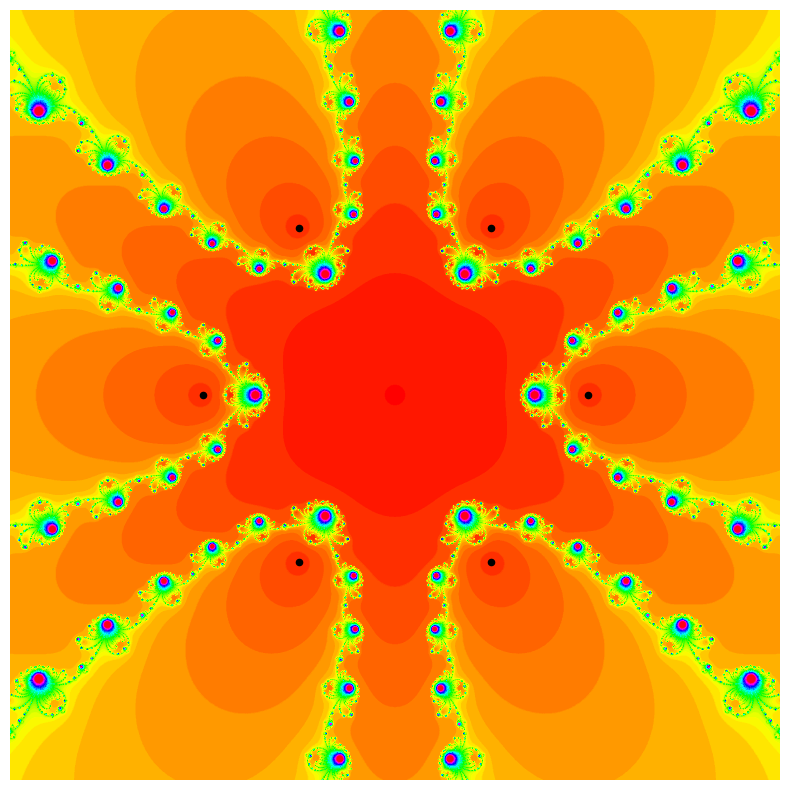The Damped Traub's Method is a widely-used numerical algorithm for finding roots of complex polynomials. Understanding the behavior of this method in the complex plane is crucial for analyzing its convergence properties. This repository provides tools to visualize the basins of attraction, aiding in the comprehension of the method's behavior. The Damped Traub's Method family encompasses a range of algorithms utilized for root finding of complex polynomials. Within this family,
- Implementation in Python
- Visualization of basins of attraction in the complex plane
- Two options for plotting basins of attraction: with different colors or with a unique palette of colors
- utils.py: Contains the definitions of the necessary functions.
-
parameter-plane.ipynb: Jupyter notebook for the parameter plane of the damped Traub's method applied to the polynomial
$p(z)=(z-\alpha_1)(z-\alpha_2)$ . -
basins-damped-Traub: Jupyter notebook for plotting basins of attraction of damped Traub's method. Mostly, Newton's method (
$\delta=0$ ) or Traub's method ($\delta=1$ ). However, any damped factor could be used. - zoom-poles/: Folder containing Python files where we locate the free fixed points and free new fixed points of the method for some specific cubic polynomials.
-
mathematica/: Folder containing mathematica files used for computations regarding damped Traub's method applied on cubic polynomials and to the family
$p_d(z)=z(z^d-1)$ .
This work is part of my final master's thesis for the Advanced Mathematics program at the University of Barcelona. The attached PDF document details the research conducted on the root-finding algorithm. Our goal is to prove the simple connectivity and unboundedness of the method, using the well-known results of Newton's method.
To utilize this repository, simply clone it to your local machine and execute the provided Jupyter notebooks. Make sure to have the necessary dependencies installed.
This project is licensed under the MIT License - see the MIT License file for details.
Special thanks to Dr. Xavier Jarque i Ribera for their contributions and inspirations.
For any inquiries or suggestions, please feel free to reach out to rosadodav4@gmail.com.


